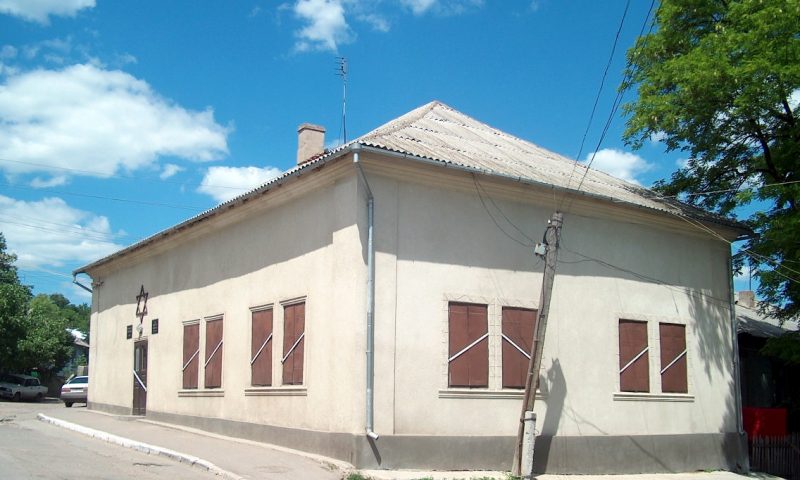There are three monuments to the victims of the Holocaust in Soroca. Two of them are on the territory of the Jewish cemetery. The first one is dedicated to 40 Jews shot on July 21, 1941. It is composed of four components. In the top center, there is an inscription: “To the victims of fascism, who were shot in July 1941 near the Bekirovsky bridge, Soroca”. Below is the Star of David, under which is a list of the victims in Yiddish. It is written also: “In the town of Soroca forty people killed by the Nazis for lighting up the Ha Shem on the tragic day of Tammuz 26, 5701 and reburied here in Tammuz in 5710. May their souls be bound by the bonds of life”. On the side of vertical plates there is a list of executed Jews in Russian. The second monument is dedicated to the victims of the brutal extermination of the Jews of Soroca and other towns of the North of Moldova the Cosauti forest. There is also a monument to the Victims of Fascism, with an inscription in Russian and Moldovan (Cyrillic): To the Victims of Fascism.
Soroca was occupied on July 15, 1941. By this time, the Romanian troops captured Vertuzhany, where they decided to establish a temporary ghetto – a transit camp for the Jews of the region. The first action in Soroca was the demonstrative execution of the most famous of the remaining Jews, including the chief rabbi. After the execution in July, the Jews of the town were placed in the most destroyed part of Soroca, in a temporary ghetto. However, already in July – August, they began to be sent to Vertuzhany. People were told to take their things and drove towards the Cosauti forest. Those who got there were doomed. In the forest, in the region of ravines, a place was arranged for the extermination of the Jews of the North of Moldova.
The cemetery is located on the territory of the town on a flat area. It occupies 1 million square meters. It is believed that there are 25 thousand monuments. Conventionally, the territory is divided into two sections: the old and the so-called new one. Old burials date back to the 19th century. The oldest are believed to date back to 1835. However, the so-called new cemetery also includes burials from the second half of the 19th century. The cemetery is surrounded by a fence destroyed in several places. There are locked gates. There are several graves in the cemetery – memorials associated with the mass extermination of the Jews of the town and its environs during the Holocaust. In the 90s, cases of vandalism were fixed at the cemetery.
There are three monuments to the victims of the Holocaust in Soroca. Two of them are on the territory of the Jewish cemetery. The first one is dedicated to 40 Jews shot on July 21, 1941. It is composed of four components. In the top center, there is an inscription: “To the victims of fascism, who were shot in July 1941 near the Bekirovsky bridge, Soroca”. Below is the Star of David, under which is a list of the victims in Yiddish. It is written also: “In the town of Soroca forty people killed by the Nazis for lighting up the Ha Shem on the tragic day of Tammuz 26, 5701 and reburied here in Tammuz in 5710. May their souls be bound by the bonds of life”.
The synagogue was built by the Hasidim of the town in 1804. In Soviet times, the building was used as a materials warehouse, the community completely restored and remade it. The Aron Kodesh was restored. The building is one-story. A yard adjoins it. The total area is of 300 square meters. The community of the town itself is also located here. An attempt to name a section of L. Tolstoy Street, near the synagogue, after one of the rabbis of the town was not approved by the municipality. Although almost all the premises for religious services have been preserved, religious services were practically not held. There was no rabbi in the city. There is currently no minyan in the city.
In the middle of the 19th century, there were two synagogues and six prayer houses in Soroca.



